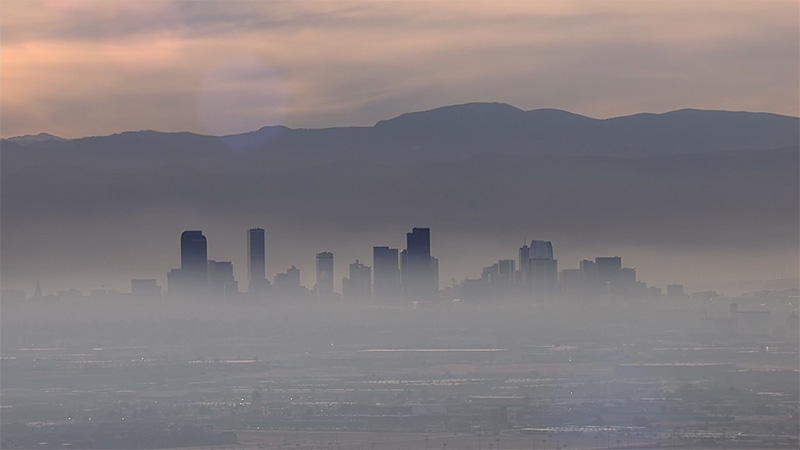The evidence is clear: It’s going to take laws and rules to make Front Range air safe to breathe again
Ozone pollution is a serious health hazard that is easily overlooked because you can’t smell it, see it, or taste it. However, ground-level ozone pollution is very real, and we experience hazardous levels far too often.
In fact, the northern Front Range has been downgraded to “severe” nonattainment — just one step away from the worst possible classification — because our state has not been successful in getting this dangerous lung irritant under control.
Despite the serious health impacts of breathing high ozone, most of my constituents do not make that association and rarely realize that ozone may be the cause of their adverse health conditions. The risks are most severe for children, aging adults, and anyone with asthma or underlying breathing conditions.
As the Mayor of Broomfield, I believe a top priority is ensuring the health and safety of my constituents. Broomfield has implemented a state-of-the-art air quality monitoring program which measures toxic air pollutants including ozone. During the peak ozone pollution summer season, Broomfield’s monitoring stations captured ozone levels above the 70 parts per billion, 8-hour federal health standard on 15 separate days. Additionally, public health experts state that impacts can occur from repeated exposures as low as 60 parts per billion, and Broomfield had a whopping 68 days above this exposure level during this year.
On Dec. 16, Colorado’s Air Quality Control Commission adopted an updated ozone State Implementation Plan, knowing full well that it will not effectively reduce ozone pollution across the North Front Range, or bring us into federal attainment. Commissioners voiced impatience with the pace at which the state’s Air Pollution Control Division is bringing concrete and meaningful proposals to the Commission to curb violations of the health-based federal standards.
The good news is that the commission committed to taking another look at the State Implementation Plan in 2023. The commission decided that in 2023, stakeholders must meet to evaluate the most effective rules to effectively reduce unhealthy air pollution levels. While I share the commissioners’ frustration at the slow pace of addressing ozone pollution, I appreciate and applaud their decision to revisit and evaluate additional control measures in the new year.
If we are going to reduce ozone pollution to safe levels, we must decrease the pollutants that cause ozone to form, which include nitrogen oxides and volatile organic compounds. While the No. 1 source of these ozone precursors remains pollution from the upstream oil and gas industry, other sources include midstream pipelines, tailpipe pollution from gas-powered vehicles, and gas-powered lawn equipment.
While we continue to wait for the process to play out, our air quality is getting worse and we continue to set pollution records. In this year’s State of the Air report from the American Lung Association, all counties in the Denver Metro North Front Range ozone nonattainment area received an “F” grade for overall air quality. Furthermore, the Colorado Department of Public Health and Environment issued a record-setting 75 ozone action alert days for the Denver Metro region during this past summer ozone season.
If damaging lungs up and down the Front Range weren’t enough, ozone is also a potent greenhouse gas responsible for impacts on our climate. We are all too familiar with extreme weather events, hotter summers, aridification, and decreased snowpack. Red Flag days are a new reality as we must contend with the deadly combination of increased fire risk on high wind days, and the resulting smoke from these destructive fires that cloaks the Denver Metro region, which is likely to intensify if reducing climate changing pollution is not rapidly and effectively addressed.
Without further legislative action, or an effective plan for positive incentives that are guaranteed to reduce emissions in the near-term, ozone will continue to plague our region. Reducing pollution in the summer ozone season is most urgent.
The following actions, whether enacted through legislation or rulemaking, would drastically improve our air quality:
- Requiring operators to pause the highest polluting activities like drilling, fracking, and flowback during the summer ozone season
- Eliminating all routine venting and flaring from factories, as well as oil and gas drilling activities
- Expanding the adoption of non-emitting pneumatic devices for existing oil & gas operations to ensure progress continues uninterrupted beyond the current May 2023 schedule
- Ensuring the recently expanded Leak Detection And Repair program is being strictly adhered to
- Moving swiftly toward electrification of all gasoline powered vehicles and lawn equipment.
Furthermore, it is critical to ensure that planned pollution reduction efforts are enforceable, equitable, and verifiable.
We know from experience that relying on voluntary compliance from polluting industries does not curb emissions. Therefore, we stand ready to work with our state legislators to take the next steps and ensure pollution is reduced to levels that are safe for all Coloradans to breathe clean air.
Click Here for original article

